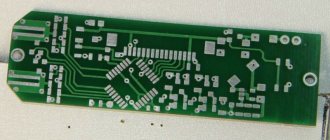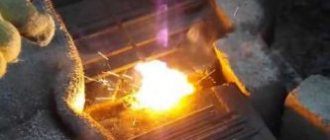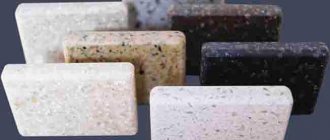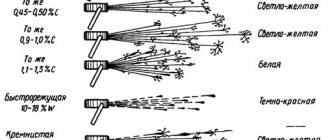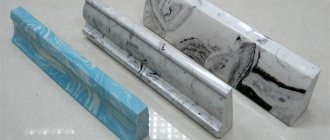Chrome plating is a technology that is used to protect metal products from corrosion. In addition, this method is also suitable for decorative purposes. The procedure itself can currently be performed in several ways. Let's take a closer look at them, as well as what equipment is used for chrome plating.
Now we sell equipment for chrome plating, both domestic and foreign. Foreign developments are distinguished by their convenience and efficiency in operation, as well as their compactness. But they are much more expensive than their Russian counterparts.
Description of the basic operating principle
As for the configuration, it usually consists of:
- working stand;
- pressure gauges (preferably a whole set);
- spray bottle;
- pistol
It is these parts that carry out both the blowing of products for processing and other work processes. Domestic analogues are much cheaper. But they often lack the ability to perform decorative finishing.
When such equipment is used for chrome plating, the description of the process will look like this:
- Any paintwork previously applied must be completely removed. Any contamination must be removed. Grinding and degreasing are carried out.
- After this, move on to the primer layer.
- Heat treatment of products helps improve adhesion to other materials.
- The next step is to use a spray gun to apply the chrome layer.
- Varnish or self-adhesive film is used to provide additional protection.
Thus, the metal receives maximum protection from corrosion processes. Chemical metallization also helps to cope with this problem. It is performed with special reagents, which are also used in the chrome plating process. The procedure promotes the formation of a thin layer of chromium. The main characteristic is a high level of protection. Just like the chrome plating equipment itself.
On video: equipment for chemical metallization.
Pseudo-chrome plating and real processing
Using paint that contains up to 75 percent chromium is one of the simplest metal processing options. But this decision does not apply to metallization in the full sense of the word. They simply use paint on the surface of the product that requires treatment.
With this method of chrome plating, an ordinary paint brush or spray bottle will become indispensable assistants. However, there is also chrome spray paint on sale, which simplifies the painting process.
If the work is done according to all the rules, the result will last for at least five years. This result is achieved by any chrome plating installation. But, if such a layer is damaged, then corrosion will quickly begin to penetrate inside the product.
If you carry out truly effective metallization with your own hands, then you need to use:
- source of direct electric current;
- electrolyte for chrome plating;
- a special container where galvanic processes will take place.
This is a minimum set, without which chrome plating becomes completely impossible.
Chemical chromium plating technology
The algorithm for chrome plating, which is carried out by galvanization, can be described as follows:
- The product for processing is placed in a special bath, which is pre-filled with electrolytic solutions.
- Afterwards everything is connected to the current source, with a plus sign.
- Any chromium-based workpiece is connected to the negative contact at the power source.
- The chrome billet absorbs the electricity. It goes into the electrolyte, to an additional product. Next, the ions that make up chromium are separated. They are passed through the surface of the electrolyte, and then taken over by the part being used. It is sometimes difficult to get a set with them.
- Chromium ions settle on the surface and bind to it at the molecular level. The result is the formation of a layer that provides maximum protection.
It is the chemical type of metallization that contributes to the creation of the most reliable protective layer.
This technology allows you to apply a layer of not only chromium to the surface, but also of other metals, including: aluminum, silver, zinc. The installation for chemical metallization remains the same. It is important to use a suitable current source, then the speed of the process for chrome plating parts will be appropriate.
But we must remember that the process of chemical metallization involves the release of substances harmful to human health. Therefore, to carry out the procedure in a domestic environment, only non-residential premises should be used. Personal protective equipment will also not be superfluous.
Thermochemical metallization
At the end of the last century, gilding of metal was carried out using thermochemical metallization technology.
This is another way to apply metal coatings for additional protection. Its main features, as well as for the equipment for chemical metallization itself, are as follows:
- A special composition is applied to the metal, in which metal dust is combined with a binder component. It is usually based on wood resins. Their selection varies.
- The product is placed inside a muffle furnace when the raw materials harden.
- Inside this structure, a sufficiently high temperature is maintained, when exposed to which the connecting element simply begins to burn out. Metal dust melts. Thus, a dense layer is formed for additional protection.
This chemical metallization is currently used in several variations. The first of them is based on the main principle according to which a layer of metal is applied to the surface of the product while constantly maintaining high pressure. The product itself is located inside an oven heated to a certain temperature.
An option is possible when a layer of metal is pre-sprayed onto the surface of the product. After this, the product is placed in a kiln for firing.
This chemical metallization is also available in a more simplified, home version:
- Metal dust is applied to the surface in one layer.
- Melt the dust using a regular construction hair dryer. This promotes the formation of a thin layer on the surface.
- Grinding and subsequent polishing with your own hands allows you to make the surface as smooth and even as possible, meeting all requirements.
Chemical metallization by this method requires the use of the following materials and technologies:
- composition for finishing coating;
- a machine with which everything is polished;
- hair dryer to create a flow of air with increased temperature;
- spray bottle for applying metal powder.
A set of tools is easy to obtain in a specialized store.
Conclusion and tips
When metallization technology is implemented at home, alum with a metal base is applied to the surface of the product. These types of compounds are harmful to human health. Therefore, you will need to purchase additional accessories to ensure protection.
The hot method of chemical chrome plating is one of the most effective solutions. This method can only be used by large industrial facilities. Indeed, under such conditions, the costs that are necessary to produce one unit of product are reduced to a minimum.
In this case, the product is placed in a container where the air maintains the highest possible temperature. Molten metal is also placed inside. It is this that then contributes to the formation of a protective shell on the product itself. At home, using such solutions is almost impossible. A special device is needed.
The main thing is to always remember the toxicity of the reagents used in chrome plating. All safety conditions must be strictly observed, without fail.
Source: https://GidPoKraske.ru/spetsialnye-materialy/diffuzionnoe-nasyshchenie/oborudovanie-dlya-hromirovaniya.html
Usage
The use of chromium in ferrous metallurgy is large - it is about 2/3 of the total metal smelting. The production of chrome-plated alloys is profitable - even small additions of alloys give the alloy the best qualities of a resistant metal.
We recommend: COPPER - the foundation of civilization
The remaining third is mainly used for chrome plating. Chrome plating can be functional, decorative, or combine both qualities.
Chrome wheels
Plumbing products are simply designed for chrome plating. Heat, moisture, and chemicals will not damage the faucet, shower, or bathroom accessories.
Informative: often the protective layer is applied to a previously created “primer” of copper and nickel.
A layer of functional chrome plating protects parts from corrosion; its thickness reaches several millimeters.
Decorative chrome plating is for beauty; its layer is thin, only 0.2-0.7 microns.
Chrome plating happens:
- electrolytic;
- chemical;
- vacuum;
- diffuse.
Interesting: a gas plasma spraying method has been developed that makes the chrome plating process safe.
Chemical metallization - how to protect the coating?
Those who are interested in the protection of alloys and decorative coating are probably interested in the question: is chemical metallization feasible at home? Let's talk about this in more detail.
What is metallization technology and in what cases is it carried out? As the name implies, this process involves applying a metal layer to the surface.
Moreover, the base material can be either metal or non-metal (wood, glass, etc.).
Depending on the coating, there are: the most popular galvanizing process (a layer of zinc is applied), chemical chrome plating (a layer of chromium), aluminizing (aluminum coating), which is not familiar to everyone.
What about application methods, they can also be very different, depending on what equipment is used. Electroplating is widely used, where the workpiece is placed in a bath of electrolyte.
Application area
The electric arc metallization method in combination with subsequent painting of metal structures is a hybrid coating, the service life of which significantly exceeds the sum of the service life of each layer separately due to the synergy effect. Such coatings are used for long-term anti-corrosion protection of products operated under conditions of exposure to aggressive factors inside and outside structures, in liquids. Coatings formed as a result of electric arc metallization are used to protect:
- metal structures;
- reinforced concrete supports of overpasses, bridges;
- fuel and oil storage facilities;
- pipelines;
- equipment for petrochemical industry enterprises, heating networks.
What is chemical metallization? DIY chemical metallization:
Effective protection and decoration is a very relevant topic both for large-scale production and for the home craftsman. One of the most popular methods for solving these problems is chemical metallization. It is widely used in production, and is also done by hand.
Types of metallization
Metallization is the application of a thin metal layer to a surface. This way not only metal products can be processed, but also plastic, wood, glass and others.
The most popular and well-known types of this process are chrome plating (that is, metallization with chromium) and galvanizing (when the surface of the product is coated with a layer of zinc).
A lesser known type is aluminizing (applying a layer of aluminum to the surface). Depending on the equipment and technology, there are several types of metallization:
- Galvanic. It is performed in a special electrolyte, which is poured into baths.
- Electric arc metallization. The coating here is applied in the following way: electric arc melting of a metal electrode is used.
- Gas plasma spraying technology is similar to electric arc metallization, when molten, finely dispersed metal is applied to the surface. Gas plasma spraying, like electric arc metallization, is a rather complex technological process, so it is used mainly in production.
- Cladding. In this method, a layer of metal is applied to the surface of the product, after which hot rolling is applied.
- Metallization is diffuse. High temperature causes atoms of the applied metal to penetrate the surface of the workpiece.
- Hot type of metallization. The coating is formed when the product is immersed in molten metal.
- Chemical metallization. This type is perfect for use at home.
Benefits of technology
Chemical metallization is a very simple process.
Applying the coating is technologically simple. To do this, it is enough to have standard sprayers. This allows you to coat any product: from a phone case to a car hood or a statue. Any materials can be chrome-plated: plastic, ceramics, wood, plaster, etc. The degree of reflection of the coating depends on the number of layers applied. Chemical metallization gives the product additional strength and hardness. Moreover, the coating has high wear resistance. The strength here is ensured by a protective varnish that can withstand any operational wear. For the chrome plating process, dimensions do not matter. Any surface area can be sprayed in a short time. This is one of the main differences from the vacuum metallization process or galvanic electrodeposition.
Chemical coating is much cheaper than other methods. Average savings are up to 30%. In addition, the coating is environmentally friendly. In the same galvanic process, metallization occurs using toxic hexavalent components. When chrome plating, you can choose any coating color. To do this, just add a little toner to the protective varnish.
DIY chemical metallization at home
To protect parts of various mechanisms or parts of metal structures from corrosion, giving them additional wear resistance, hardness and improving the aesthetic appearance, chrome or nickel plating is used.
These methods involve applying a chemically inert coating of chromium or nickel to the surface of structures, improving aesthetics. Applying such a film is an energy-intensive process. Technologically, it is complex, but it provides protection for many decades without any noticeable loss to appearance.
Often there is a need to cover with a decorative film those products that were not initially subjected to the chrome plating process. Thus, if desired, you can, for example, change the appearance of the sculpture and make the interior of any living space modern.
You can decorate your car or motorcycle to your liking. It’s not at all difficult to do this even with your own hands, that is, without using complicated technologies.
It is possible to apply a chrome film even on structures with complex relief, and not just convex, flat or concave ones.
Basic methods of chrome plating
- Chemical metallization process.
- Galvanization.
- Vacuum spraying.
- High temperature diffusion.
The last two methods are used only in industrial enterprises.
These processes cannot be performed at home, since they require technically complex installations and increased energy costs. But chemical metallization and galvanization are exactly the same processes that can be carried out in a personal workshop.
Let's take a closer look at how this is done.
Chemical metallization of surfaces and parts
In the process of this work, chemical reagents, a compressor and a spray gun are used. Almost the same operations are performed as when painting surfaces with acrylic varnish or enamel.
When chrome plating in this way, not a protective polymer film is applied to parts and structures, but a mirror-like thin layer of metal. Its thickness is in the range of 0.075-0.25 millimeters. The chemical and physical characteristics of such a coating are comparable to those obtained by vacuum deposition.
How to perform chemical metallization
1st method. The surface is coated with special chemicals. As a result of the chemical reaction, a precipitate is formed, which is a durable metal layer. The coating can be made not only from chrome, but also from silver.
2nd method. During the process of a reducing chemical reaction, a layer of chromium is formed from the salts. Prepare a set of acetic acid, chromyl chloride, chromium chloride, chromium acetate, sodium hyposophite, sodium hydroxide, chromium phosphate. It must be remembered that these substances are very toxic and hazardous to health.
And therefore, you should carefully study the chemistry textbook if you decide to carry out the chrome plating process using this method. But achieving high quality is very difficult, even with detailed instructions. Despite all the existing disadvantages, this method is most often used for chrome plating surfaces in home workshops.
It is very convenient to carry out the plating process using ready-made test kits of chemicals for chrome plating. They are offered by Fusion Technologies.
The convenience of such kits is that the coating can be applied to any of the listed materials: metal, ceramics, wood, glass, plastic. Galvanic installations and special complex equipment are not required.
All you need is a spacious room, distilled water, a compressor, a sprayer and a set of chemicals. In addition, you need to prepare a gas burner with a gas cylinder.
Safety regulations:
- Ventilation device in the workshop. Opening doors and windows will not solve the problem. Install an ordinary kitchen fan into the window. This will be enough for amateur work. If you plan to work on a private enterprise scale, chrome plating a large number of spare parts for cars, decorative interior items, then you will need to install more efficient and powerful ventilation.
- Sewage equipment. The work will require large amounts of water to wash parts. Additional cleaning is not necessary, since it is chemically inert. But the drainage into the sewer canal must be equipped.
- In order not to expose the respiratory system and skin to dangerous effects of reagents, it is recommended to work with the use of protective equipment. Stock up on respirators, special safety glasses and a durable apron. You will also need several pairs of rubber gloves.
When performing chemical metallization in your personal workshop, do not forget about strict adherence to technology. Reagents should be applied to the surface in the specified order.
This is followed by the application of a thin layer of silver. This metal is safe, unlike chromium and compounds. The finishing layer is in no way inferior to chrome in terms of characteristics.
A set of reagents for metallization consists of modifiers A and B, a reducing agent and an activator. At the very beginning of work, the reagents are diluted in the specified volume of distilled water. Proportions are strictly observed. Solutions should be stored in a cool place. You can buy the varnishes and pigments necessary for the work at the same store where you bought the reagents.
Work order:
- Preparation of a part or structure. The surface should be thoroughly cleaned. It should be as smooth as possible. This is done by polishing.
- The varnishing process is then carried out using a varnish designed for this purpose.
- When the varnish is completely dry, the surface is treated with a gas torch. This technological process changes the structure of the varnish at the molecular level. This is done to increase absorption and adhesion for the metallized coating.
- Following the heat treatment, the activator is sprayed. Excess activator is quickly washed off with water.
- While the surface is still wet, a modifier is applied, followed by a solvent. The reaction between them leads to the formation of the necessary mirror coating layer. Again, the product is washed with water and dried with a directed stream of air.
- The metallization process takes about six hours. After this, in accordance with the technology, the part is varnished. The effect of bronze, chrome or gold is achieved by adding appropriate pigments to the varnish. If you decide to chrome parts at home and with your own hands, order all the necessary chemicals on the company’s website. If necessary, specialists will provide qualified assistance and suggest suitable options for installing equipment in your home workshop.
Chrome plating business – Equipment for chrome plating
In this article we want to draw your attention to quite simple and obvious things for many. But due to the fact that questions on the topic of organizing a business are among the most frequently asked, we tried to systematize the answers.
Why chemical metallization services could be your business
The mirror coating is a thin film of silver. Silver, gold and various shiny things are associated with wealth. There is a demand for such coatings, and it is constantly growing. Clients want to have exclusive things. And where there is an exclusive, there is handmade, one-piece products and high cost.
What is the cost of coverage
This is generally one of the most frequently asked questions. People who have an understanding of business understand that profit is calculated using a much more complex formula than cost + trade markup.
Running a business is difficult; you have to work harder than anyone else. You can’t buy a camera and press its button to become rich. You cannot buy a sewing machine and become a Couturier without sitting down to use it.
Many customers will be handling such products, the cost of covering which will be several times higher than a new product. It is unlikely that you will be able to earn anything here other than your own experience and honing your skills.
For example, decorative chrome parts of production cars, like new parts in a store, cost much less than restoring a peeling coating using metallization. Simply put, we recommend buying new. Frankly poor and greedy customers ask for chrome to be applied to car wheels.
They want to add attributes of a premium car to their twenty-year-old car. However, they will most likely bring old, broken discs. Not even new with regular paint. They are, of course, not ready to buy new chrome wheels produced in a factory.
They need you to restore their junk to perfect condition, but they are almost never willing to pay for it. Chromizing old wheels is not a business. You can make CDs for yourself, for friends, or as an advertisement for your services. But it's not worth trying to make money on this. And, of course, chrome wheels are not intended for everyday use.
Unless, of course, you want to turn your exclusive into commonplace. So, cost and profit are the subject of a whole report. The main thing you should know is that some truly exclusive products are paid for in six figures. But you will have to work for more than one week. A business plan will be needed for those who plan to use borrowed funds.
We can, of course, help in compiling it. And we have done such individual work more than once, but we’d rather do a project for your workshop: how to plan the room, what additional equipment, where to install it, how to work with a positive result, etc.
Why chrome anyway?
Familiar things that will become unusual and eye-catching. There is no need to try to replace other technologies with decorative coating by spraying. There is no need to invent anything. Here are simple instructions:
- How to chrome an entire car? Use self-adhesive film of the desired color. It's cheaper, faster and can be removed at any time.
- How to chrome car wheels? It’s better to buy new, factory-made ones, made by vacuum deposition of aluminum, titanium or galvanic method.
- How to restore chrome parts of equipment? If spare parts are available for sale, it is cheaper and easier to buy a new one. If the part is from old equipment, use the spraying method. The chrome plating of a metal part can be restored by electroplating if conditions exist in your area. Restoring old parts using the galvanic method is also a labor-intensive and painstaking process, more expensive than the spraying method. Once we carried out an order to restore parts of a retro car (bumpers, handles, moldings) on a subcontract basis. The client sent the parts to galvanic production. From there the parts were transferred to us, we applied a silver layer using our installation and returned them to the galvanists. They handed over the finished parts to the customer, he was satisfied with the work, although he is still sure that the coating was applied using an electrochemical method.
- How to chrome interior items? Use the spray method. Products that will be located indoors are cheaper and faster to cover with a mirror layer using a spray gun. In this case, the product can be made of any material, including one that is unstable to high temperatures.
- How to chrome advertising structures? For products that are used outdoors, under constant temperature changes, under the influence of ultraviolet radiation, dust, wind, birds, insects, there are other solutions offered by outdoor advertising manufacturers. Advertising structures, volumetric signs, are made of mirrored plastic for engraving, for example Rowmark and, of course, stainless steel.
Preparation of working solutions
Solutions for chemical chrome plating must be prepared in the following sequence.
The product that needs to be chrome-plated is suspended in the prepared and heated solution and kept in it for 5–8 hours. The holding time depends on the required thickness of the chromium layer. To remove residual chemical reagents from the surface of the newly applied coating, the treated product is boiled in water for half an hour. A video on this topic allows you to study the chemical chrome plating procedure in more detail.
Products on the surface of which a layer of chromium is applied are subjected to heat treatment, which promotes low-temperature diffusion, and therefore improves the adhesion of the applied layer to the base metal. Heat treatment is performed at a temperature of 400°. In such conditions, the product is kept for an hour.
Oven for drying and heat treatment of chrome-plated products
Certain steel products, such as knives, fishhooks, springs, etc., may lose their hardness after heat treatment, so they are kept at a temperature of 270–300° for three hours. Heat treatment after chemical chrome plating, the procedure for which can also be found in the corresponding video, allows you to increase the hardness of the applied coating.
The finished chrome coating, after drying the product to which it is applied, has a grayish matte coating. To give chrome its characteristic shine, the surface of the part is polished.
Recommendations
To obtain a high-quality metal layer on products and in order not to harm your health, you must follow the following recommendations:
- Before the procedure begins, all electrical contacts are checked for reliability;
- During the metallization process, it is imperative to use rubber gloves to protect your hands from burns;
- The room must be ventilated, as this process releases gases that irritate the mucous membrane of the respiratory system.
